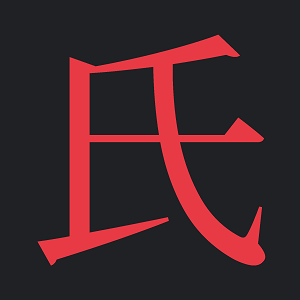氏
부수: 氏
획수: 4획
氏 has the meanings ‘clan name’, ‘surname’ and ‘Mr./Ms./Mrs.’.

氏 = 氏
X = phonetic borrowing
Caution: The interpretation of 氏 is unclear.
• 氏 is suggested to originally depict a mallet, with the meaning ‘clan name’ coming from a sound loan.
Other scholars suggest 氏 originally depicted a ladle 匕 and a cooking pot. The meaning of ‘clan’ is suggested to arrive from 𠂤 which possibly had a similar pronunciation to 氏. 𠂤 is believed to have originally meant ‘buttocks’. From the shape of buttocks comes ‘hills’ — which is where noble families lived on top of. These families would be referred to as ‘such-and-such 𠂤‘.
Another interpretation suggests 氏 depicts a person bent over; either working in the fields or bowing.
Evolution:
氏 = ’mallet’ ➔ borrowed use ➔ ’clan name’ ➔ ’surname’
Mnemonic
Since the interpretation of 氏 is largely unclear, brute force memorisation is recommended. Alternatively, take 𠂤 as depicting buttocks and imagine a rich family 氏 living on top of a hill. Their children are born with silver spoons 匕 in their arses.
Vocab
| 金氏 | 김 씨 | Mr. Kim |
| 氏族 | 씨족 | clan, family |
| 宗氏 | 종씨 | being from the same clan |
| 氏名 | 씨명 | one’s full name |
| 季氏 | 계씨 | someone’s younger brother (dated language) |
| 某氏 | 모씨 | ‘a certain person’ (dated language) |
| 攝氏 | 섭씨 | Celsius |
Other resources
Image searches
Google
Bing
Yahoo Japan
Baidu (click 图片)
Sogou
Pinterest
Flickr
CJKV
CJKV Dict
Wikitionary
Unihan Database
Korean
Chinese
Written Chinese
Arch Chinese
ZDic
CC-Canto
Chinese Text Project
The Chinese University of Hong Kong (etymology)
Chinese Boost
Japanese
Takoboto
Jisho
JLearn.net
Sakura
The Kanji Map
Sentence Search
Immersion Kit
Vietnamese
Bibliography
Affiliate links help support uK.
— Grant, B.K. (1982). A Guide To Korean Characters: Reading and Writing Hangul and Hanja, [s.v. 102]. Seoul: Hollym.
— Henshall, K.G. (1998). A Guide to Remembering Japanese Characters, [s.v. 495]. Singapore: Tuttle Publishing.
— Outlier Dictionary of Chinese Characters, [s.v. 氏].
— Seely, C., Henshall, K.G., & Fan, J. (2016). The Complete Guide to Japanese Kanji: Remembering and Understanding the 2,136 Standard Japanese Characters, [s.v. 522]. Singapore: Tuttle Publishing.